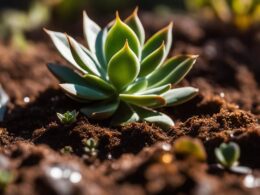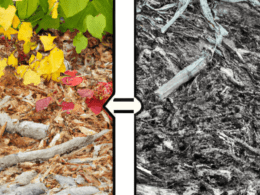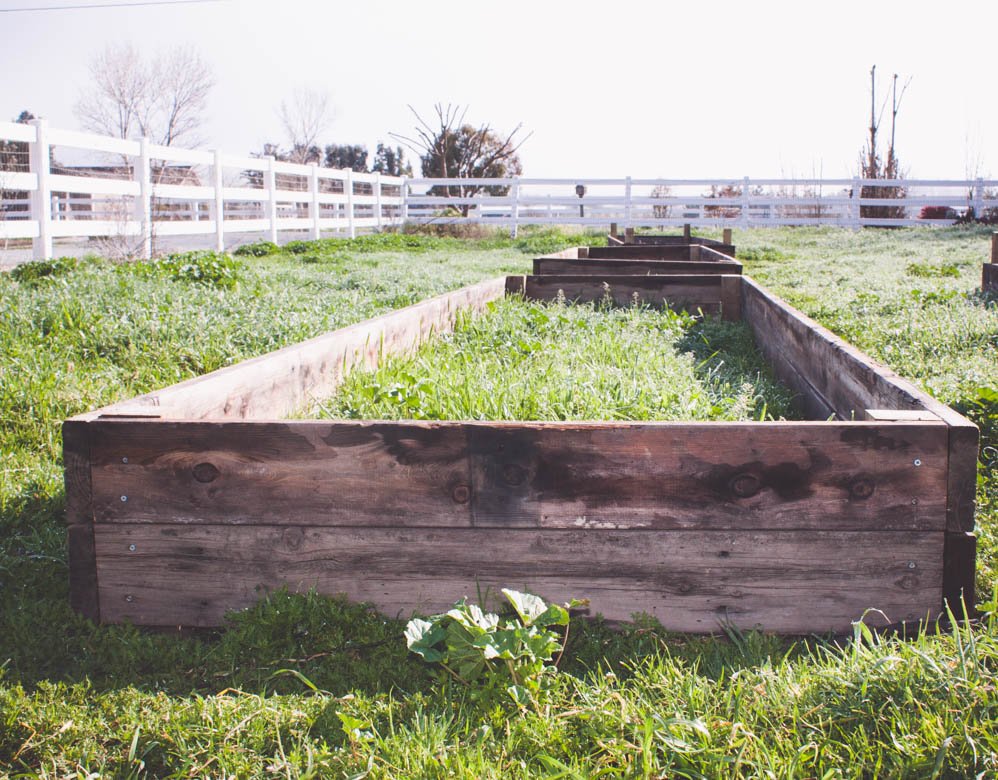Are you curious about how tall habanero plants can grow? Well, you’re in the right place!
Habanero plants are known for their fiery peppers and can reach impressive heights in the right conditions. These plants typically grow to be around 2 to 4 feet tall, making them a great addition to any garden or patio.
To ensure your habanero plants reach their full potential, it’s important to provide them with ideal growing conditions. This includes plenty of sunlight, well-draining soil, and regular watering. Additionally, taking proper care of your plants by fertilizing and pruning them will help promote healthy growth.
By following these tips, you’ll be well on your way to growing tall and robust habanero plants that will produce an abundance of spicy peppers for all your culinary adventures. So get ready to spice up your life with these fiery plants!
Quick Summary
- Habanero plants reach heights of 2 to 4 feet.
- They are compact and bushy, suitable for indoor and outdoor cultivation.
- Habanero plants thrive in warm and sunny environments with temperatures between 70 and 90 degrees Fahrenheit.
- Well-draining soil rich in organic matter is preferred for habanero plants’ growth.
Characteristics of Habanero Plants
When you grow habanero plants, they can reach heights of up to three feet, creating a vibrant and lush garden display. Habanero plants are known for their compact and bushy nature, making them suitable for both indoor and outdoor cultivation.
Taking proper care of your habanero plants is essential to ensure their healthy growth and maximum height potential. To start, provide your habanero plants with a well-draining soil mix that’s rich in organic matter. This will help promote healthy root development and prevent waterlogging, which can lead to stunted growth.
Additionally, habanero plants thrive in warm and sunny environments, so be sure to place them in a spot that receives at least six to eight hours of direct sunlight daily. Regular watering is crucial for habanero plants, but be careful not to overwater as excessive moisture can lead to root rot. It’s best to water deeply and allow the soil to dry out slightly between watering sessions.
Providing adequate spacing between plants is also important to allow for proper air circulation and prevent the spread of diseases. By following these habanero plant care guidelines, you can expect your plants to reach their full potential in terms of height and overall size. Remember, safety is key when growing habanero plants, as their fiery fruits can cause irritation. Wear gloves when handling the plants and avoid touching your face or eyes after coming into contact with the fruits or plant parts.
Enjoy your habanero plants and the spicy flavors they bring to your garden!
Ideal Growing Conditions for Habanero Plants
For the best results, you’ll want to create the ideal growing conditions for your habanero plants. Creating the optimal temperature and soil requirements will ensure that your plants thrive and produce delicious, spicy peppers.
To provide the optimal temperature for your habanero plants, make sure they’re grown in a warm environment. These plants thrive in temperatures between 70 and 90 degrees Fahrenheit (21 to 32 degrees Celsius). Avoid exposing them to temperatures below 50 degrees Fahrenheit (10 degrees Celsius), as that can stunt their growth and damage the plants.
In terms of soil requirements, habanero plants prefer well-draining soil that’s rich in organic matter. Make sure the soil has a pH level between 5.5 and 7.0 for optimal growth. You can achieve this by adding compost or aged manure to the soil before planting. Additionally, make sure the soil is moist but not waterlogged, as excessive moisture can lead to root rot.
To summarize, providing the ideal growing conditions for your habanero plants is crucial for their success. Maintaining a warm temperature range of 70 to 90 degrees Fahrenheit (21 to 32 degrees Celsius) and using well-draining soil with a pH level between 5.5 and 7.0 will promote healthy growth and a bountiful harvest of fiery habanero peppers.
Caring for Habanero Plants
To ensure the healthy development of your habanero peppers, it’s essential to provide consistent care and attention.
Habanero plant diseases can hinder the growth and productivity of your plants, so it’s important to take precautions to prevent them. One common disease that affects habanero plants is powdery mildew. To avoid this, make sure to keep the leaves dry by watering the plants at the base and providing adequate air circulation.
Additionally, regularly inspect your plants for any signs of pests or diseases, such as aphids or leaf spot, and take immediate action to control them.
Another important aspect of caring for habanero plants is pruning. Pruning helps to promote healthy growth and increase fruit production. Start by removing any dead or damaged branches to prevent the spread of diseases. Then, thin out the branches to improve air circulation and light penetration. This will help prevent fungal infections and ensure that all parts of the plant receive adequate sunlight.
Remember to always wear gloves and protective clothing when handling habanero plants, as the peppers can be extremely hot and cause skin irritation.
By following these care tips and techniques, you can help your habanero plants thrive and produce an abundant harvest of fiery peppers.
What is the Average Height of Sugar Snap Pea Plants?
Sugar snap pea height growth information can vary depending on factors such as soil quality and growing conditions. On average, sugar snap pea plants can reach a height of around 2 to 3 feet. However, with proper care and support, they can grow even taller. Monitoring their height growth is essential for maximizing their yield and ensuring a successful harvest.
Common Issues and Pests
If you want your habanero peppers to thrive, it’s important to be aware of common issues and pests that can affect them. Pest control and disease prevention are essential for ensuring the health and productivity of your habanero plants.
One common pest that can cause damage to habanero plants is aphids. These tiny insects feed on the sap of the plants, causing leaves to curl and become distorted. To control aphids, you can use insecticidal soap or neem oil, which are safe and effective methods for eliminating these pests.
Another common issue that habanero plants may face is fungal diseases, such as powdery mildew or root rot. To prevent these diseases, it is important to provide proper air circulation and avoid overwatering. Additionally, you can apply a fungicide to protect your plants from fungal infections.
It is also important to watch out for common garden pests, such as slugs and snails, which can munch on the leaves and fruits of your habanero plants. To control these pests, you can use a combination of physical barriers, such as copper tape, and organic slug pellets.
By implementing proper pest control and disease prevention measures, you can ensure the health and vitality of your habanero plants, allowing them to produce an abundance of fiery peppers for you to enjoy.
Harvesting Habanero Peppers
Ready to reap the fiery rewards of your habanero pepper plants? Harvesting these spicy gems is a thrilling adventure that’ll leave your taste buds tingling with anticipation. Here are some tips to ensure a safe and successful harvest:
-
Wear protective gloves: Habanero peppers are known for their intense heat, so it’s crucial to protect your hands from the potent oils that can cause irritation. Gloves’ll shield your skin from any potential discomfort.
-
Use sharp scissors or pruning shears: When it’s time to harvest your habanero peppers, make sure to use sharp tools to avoid damaging the plants. Clean cuts’ll promote better plant health and allow for easier preservation.
-
Preserve your harvest: Habanero peppers can be preserved in various ways, such as drying, pickling, or making hot sauce. Preserving your peppers’ll extend their shelf life and allow you to enjoy their heat and flavor all year round.
In addition to the thrill of harvesting, habanero peppers offer numerous health benefits. They’re rich in vitamins A and C, as well as capsaicin, a compound known for its anti-inflammatory and pain-relieving properties. So not only will you enjoy the fiery flavor, but you’ll also be boosting your overall well-being.
Stay safe, have fun, and savor the spicy goodness of your habanero pepper harvest!
Culinary Uses for Habanero Peppers
Indulge in the fiery flavors of habanero peppers and discover the endless culinary possibilities that await your taste buds. But before you embark on your habanero pepper culinary adventure, it’s important to consider the health benefits and safety precautions.
Habanero peppers aren’t just delicious; they also pack a punch in terms of health benefits. They’re loaded with vitamins A and C, which can boost your immune system and promote healthy skin. These peppers also contain capsaicin, a compound known for its anti-inflammatory and pain-relieving properties. So, not only will you be tantalizing your taste buds, but you’ll also be giving your body a healthy boost.
Now that you know about the health benefits, let’s explore some popular recipes that incorporate habanero peppers. One classic dish is habanero salsa, where the peppers are blended with tomatoes, onions, and lime juice for a spicy and tangy flavor. Another favorite is habanero-infused oil, which can be drizzled over pizza or pasta for an extra kick. And if you’re feeling adventurous, try adding finely chopped habanero peppers to your guacamole or even your chocolate desserts for a unique and fiery twist.
Remember, when handling habanero peppers, it’s crucial to wear gloves to protect your skin from the intense heat. And always wash your hands thoroughly after handling them to avoid accidental contact with your eyes or other sensitive areas.
So go ahead, embrace the heat, and enjoy the culinary delights that habanero peppers have to offer!
Frequently Asked Questions
Can habanero plants grow indoors?
Yes, habanero plants can grow indoors. For the best growing conditions, provide them with plenty of sunlight, warm temperatures, and well-draining soil. Remember to water them regularly and keep them away from cold drafts.
How long does it take for habanero plants to start producing peppers?
Habanero plants typically take around 80-100 days to start producing peppers. To ensure optimal growth, provide them with plenty of sunlight, warm temperatures, well-drained soil, and regular watering.
Do habanero plants need support or trellising as they grow?
Habanero plants grow rapidly, with a recommended support structure such as stakes, cages, or trellises. These structures provide stability and prevent the plants from bending or breaking, ensuring a safe and healthy growth rate.
Can habanero plants be grown in containers or pots?
You can definitely grow habanero plants in containers or pots, which is perfect for small spaces. It’s a safe option and has the added benefit of being able to easily move them for optimal sunlight and protection from harsh weather.
Are habanero peppers hotter when they are green or when they are fully ripe?
Habanero peppers are hottest when fully ripe, not green. The hotness comparison is affected by factors like maturity, color, and capsaicin content. Remember, handle peppers with caution, wear gloves, and wash hands thoroughly to avoid irritation.
Conclusion
In conclusion, growing habanero plants can be a rewarding experience. With the right care and ideal conditions, these plants can reach impressive heights.
Remember to provide ample sunlight, water regularly, and protect them from pests. Once your habanero plants are ready for harvest, you can enjoy their fiery peppers in a variety of culinary dishes.
So, get ready to spice up your meals and enjoy the fruits of your labor!








